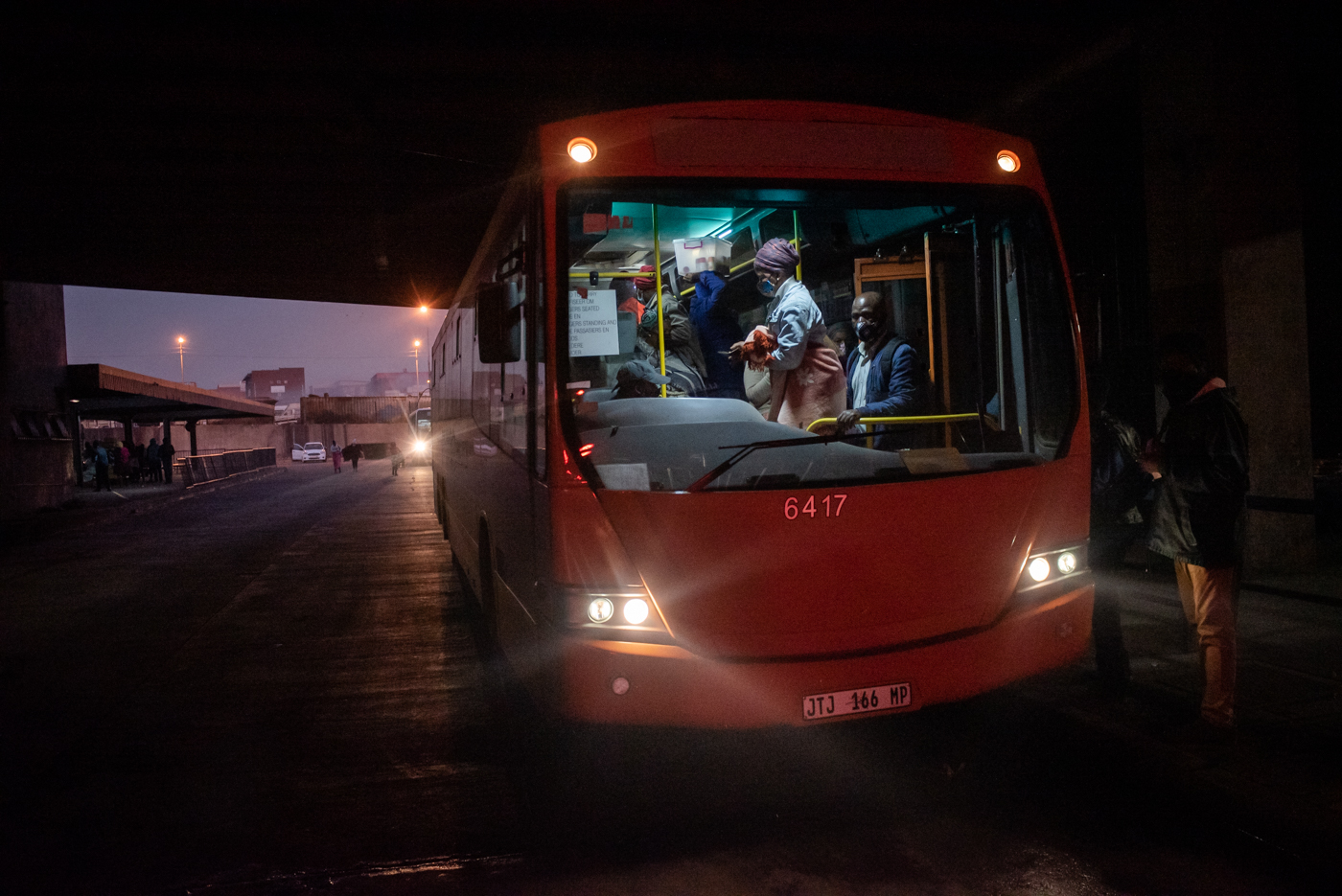For domestic worker Maria Mahlangu, and thousands others like her, every day starts and ends with a terrifying daily game of Russian roulette on the Road of Death.
This is because in order to get to work or school in Pretoria, Gauteng, they have to travel on the infamous Moloto Road (R573) in the early hours of each morning, and repeat the trip at night, when they head back to the former KwaNdebele homeland in Mpumalanga.
“You get on the bus knowing that you might not get off alive,” she explained to The Citizen on Wednesday.
Also Read: Government to blame for lives lost on Moloto Road
“Every day you are constantly nervous because of the real possibility of never getting off the bus alive. You might leave home knowing very well you might not make it to work or leave work and never make it home alive.”
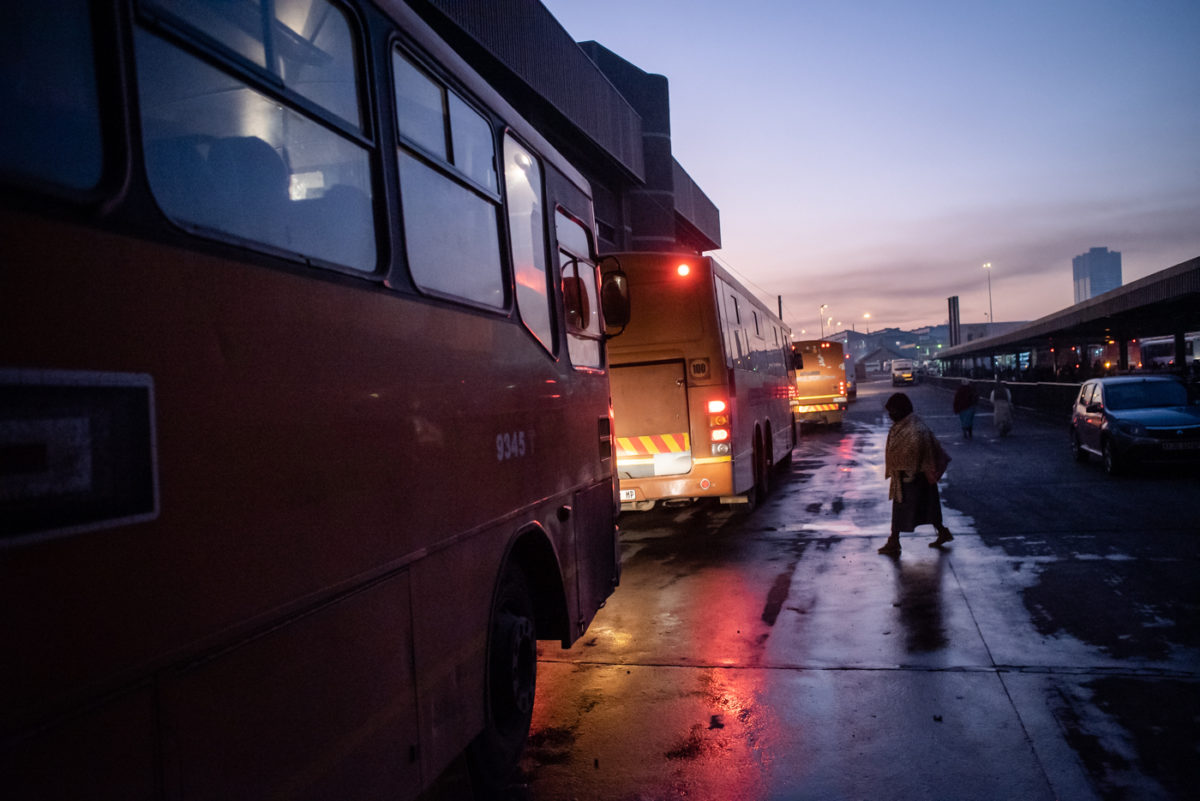
Early morning commuters at the Belle Ombre bus station in Marabastad, Pretoria, 27 May 2021. Picture: Jacques Nelles”
“I can still smell the burning flesh”
The mother of two was among 57 passengers who narrowly escaped death on Friday 21 May 2021, when a bus they were travelling on from Pretoria burst into flames, killing six people and leaving at least 14 others injured.
She is lucky to be alive, and this is only because she was seated on the third seat from the door and was able to get out of the bus quickly people started screaming from the back of the vehicle.
Mahlangu (56), from Tweefontein village, said on that fateful afternoon, she was looking forward to arriving home early for a change, but little did she know the horror that awaited them.
She said all was well as the bus department Marabastad station in Pretoria just after 13:00, making its way out of the Pretoria city centre and then onto Moloto Road.
Just after passing Roodeplaat Dam, smoke started bellowing out from the back of the bus, and then there was pandemonium.
Tired, she was nodding off when people started screaming that the bus was on fire.
When she opened her eyes, people were running from the back of the bus to the front, while others jumped out through windows as the driver brought the bus to a halt.
“It was only by the grace of the Lord that I took a seat next to the door. Most of the time I am at the back chatting to my friend, who has since burnt to death. I can still smell the burning flesh and hear the screams of those dying people,” Mahlangu said.
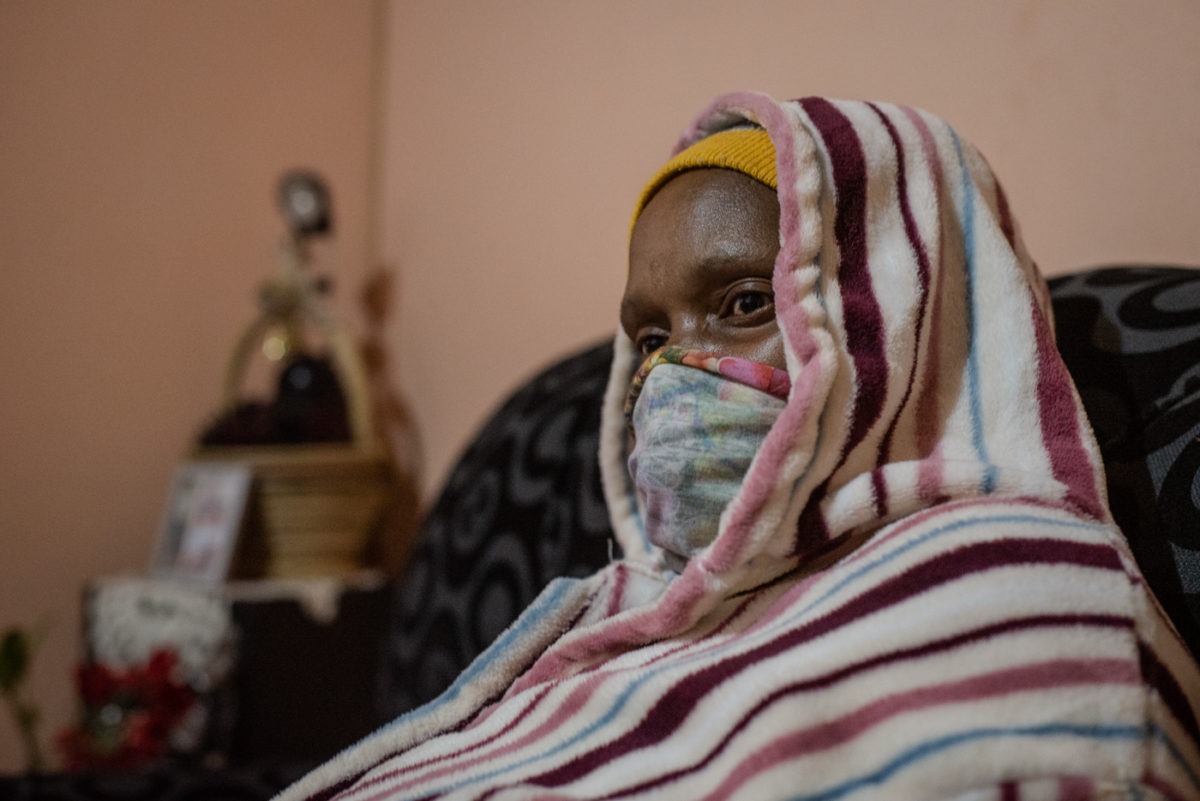
Maria Mahlangu who survived a recent bus accident along the Moloto road where 6 of the passengers burnt to death, 26 May 2021, Tweefontein, Mpumalanga. Picture: Jacques Nelles
Also Read: Minister launches probe into Moloto Road crash
The long daily commute
She has travelled the perilous road for more than two decades, saying a little prayer of mercy before getting on the bus and a thankful prayer when she gets off the bus.
Her typical day starts at 2:00 every day, when she starts preparing to be at her stop by 2:45 to catch the first bus for the about 150Km ride to Belle Ombre station, from where she takes a connecting bus to the Pretoria East suburbs.
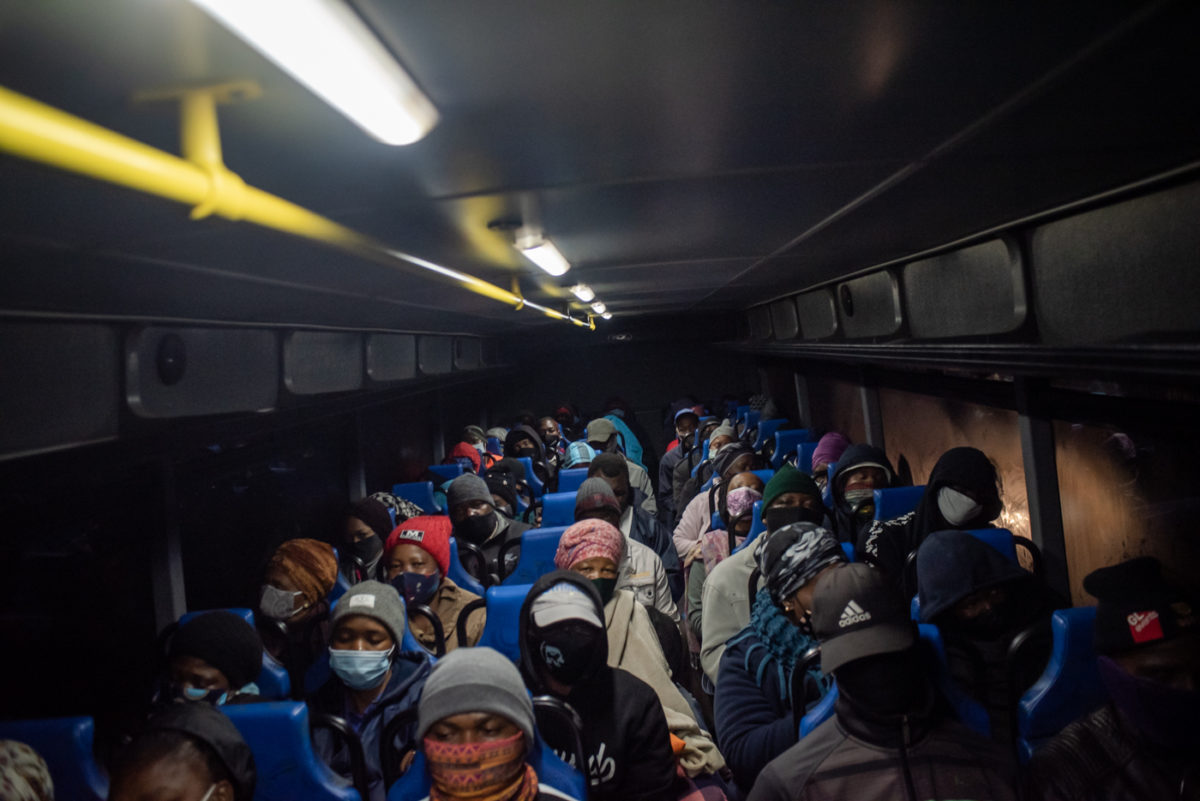
Passengers aboard the 4:45 bus from Tweefontein to Marabastad can be seen driving in the dark on the Moloto road known for being one of South Africa’s most dangerous roads, 27 May 2021, Mpumalanga. Picture: Jacques Nelles
Mahlangu only gets to her workplace at 7:00 and knocks off at 5pm, when she takes a bus back to Belle Ombre to catch the return bus home, to arrive between 19:30 and 20:00.
“I spend about four hours on the road to get to work and then another four hours to get home. So for eight hours, each of the weekday, I am on the road,” she said.
Spending a third of their salaries on commuting between work and home
Domestic workers earn as little as R3000 a month and about a R1000 of this goes to transport but Mahlangu said, as the breadwinner of her family of four, she needs the money and has to gamble with her life to put food on the table.
Since the late 1970’s, Moloto road has seen some of the most horrific road accidents involving the commuter buses, claiming thousands of lives as government’s repeated promises to upgrade road have come to naught.
Also Read: R4.5bn allocated for Moloto Road upgrades as project handed over to Sanral
The commuters were hopeful that their pleas for intervention were finally being answered, when in his 2017 State of the Nation Address (Sona), then president Jacob Zuma, announced that Sanral had started with the planning phase of the R4.5-billion Rand project to upgrade the road.
But Tweefontein community leader James Skosana said all Sanral has done since then was construct roundabouts and install ground reflectors on the barrier line.
“We are still asking ourselves how come R4-billion only covered the roundabouts. The road is a single lane and carries the same amount of traffic as the N1. How many more people must die until something is done?” he asked.
More unkept promises
During 2016 South Africa, Zuma said, government had also signed a cooperation agreement with the People Republic of China to build the Moloto Rail Development Corridor, the intervention the commuters have been pleading for.
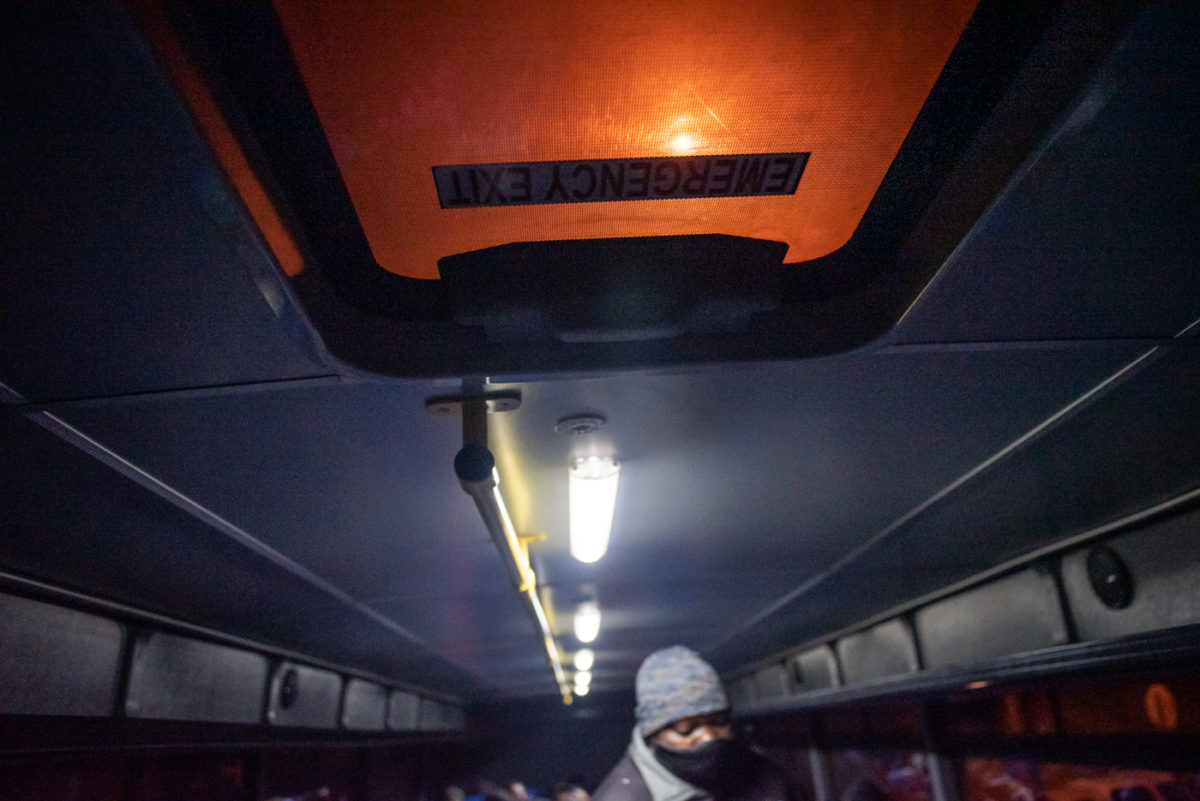
A passenger disembarks from the 4:45 bus from Tweefontein to Marabastad on the Moloto road known for being one of South Africa’s most dangerous roads, 27 May 2021, Mpumalanga. Picture: Jacques Nelles
Also Read: Ray of hope for Moloto Road commuters
But nothing has ever been said about the corridor since then, with residents organised under the Moloto rail Corridor Concerned Residents (MCCR) camping at the Union Buildings in Pretoria since last September demanding answers.
When their pleas for answers fell on deaf ears, the group approached Public Protector Busisiwe Mkhwebane to probe the delay in the proposed R34billion development project of Moloto Rail Corridor.
Mpumalanga MEC for Community Safety, Security and Liaison, Vusi Shongwe, Public Works, Roads and Transport MEC Mohita Latchminaraian as well as Gauteng MEC for Public Transport and Roads Infrastructure Jacob Mamabolo visited the bereaved families on Thursday.
But Skosana said this was cold comfort for commuters who continue to be sitting ducks for the Road of Death, without an alternative route to get to Pretoria.
About 500 people use buses each day to commute between Pretoria and this area on the 152km stretch of R573.
Some of the most horrific bus accidents on the Road of Death
- April 2006: Six people are critically injured and 80 sustained minor injuries when three buses collided at the Pienaar’s River offramp on the Moloto Road.
- March 2006: Thirteen people are killed and 71 were seriously injured when a bus collided with two vehicles.
- November 2013: 29 people are killed when a bus collided with another stationery bus near Kwaggafontein in Mpumalanga.
- November 2019: Six people are killed when their bus collided with a cash-in-transit truck.
- December 2019: Three people are killed when a truck allegedly swerved onto the oncoming traffic lane and collided with a bus in Moloto village, near KwaMhlanga.

